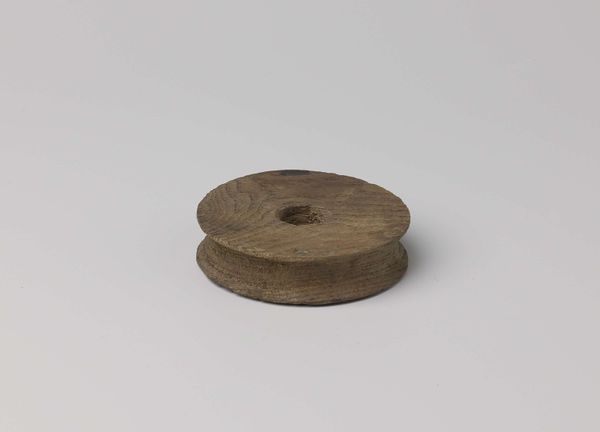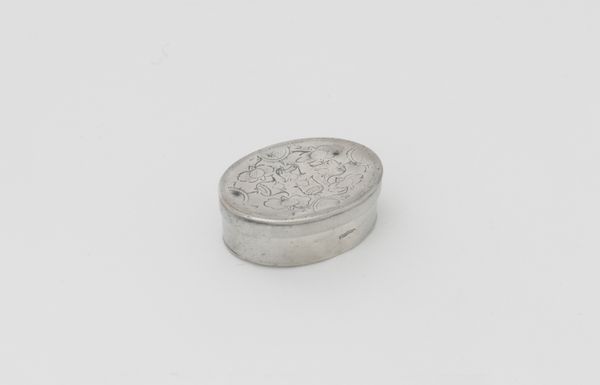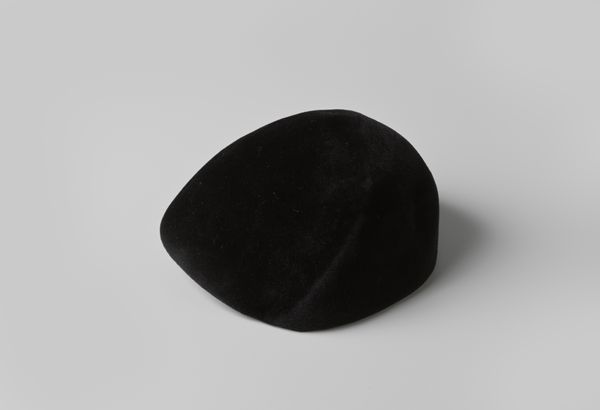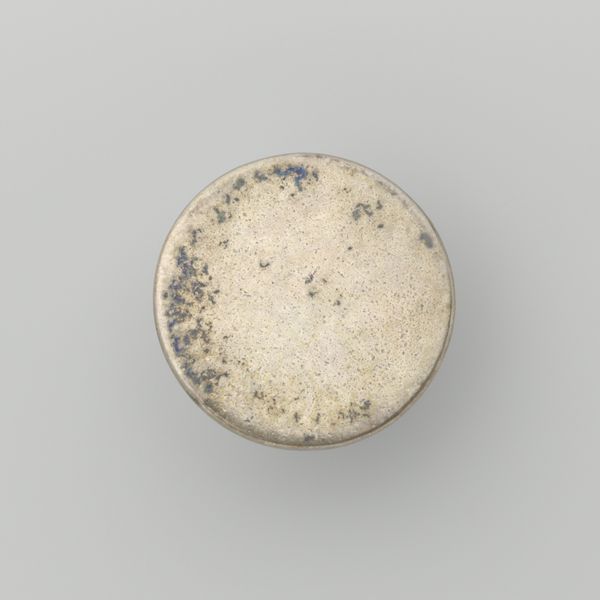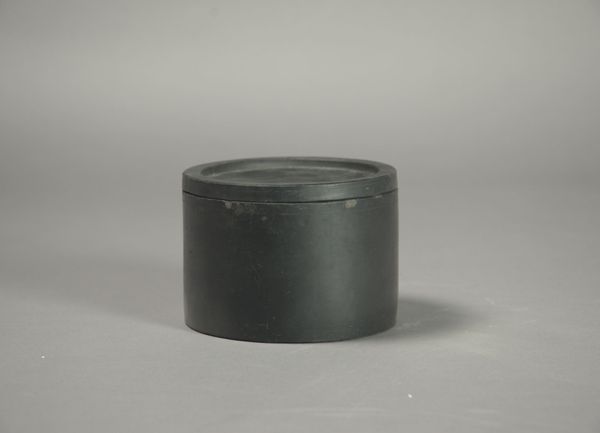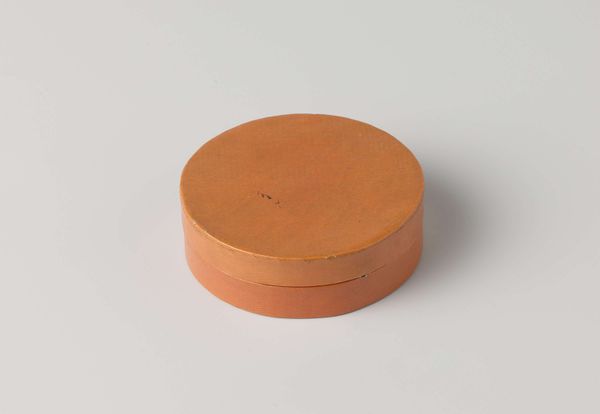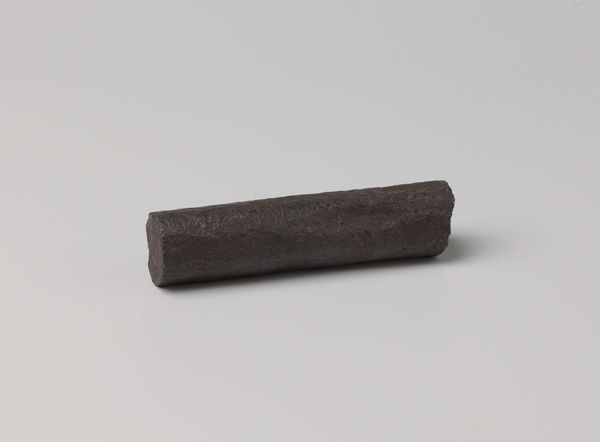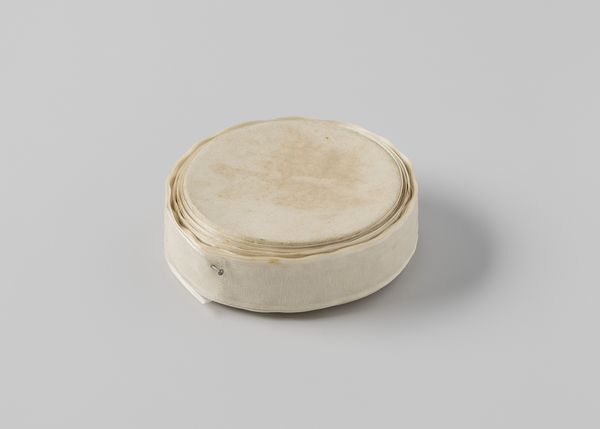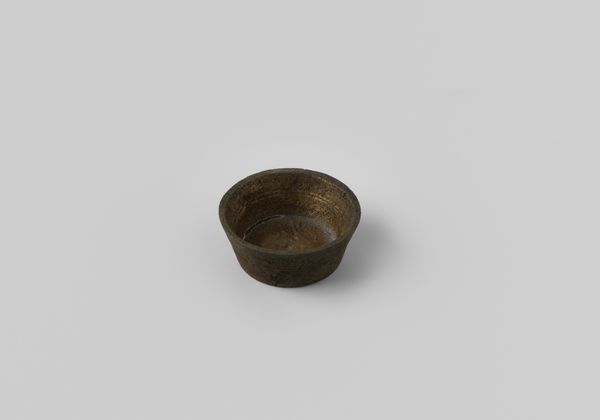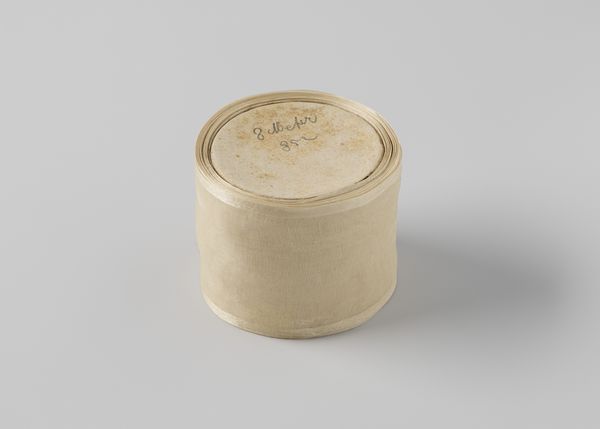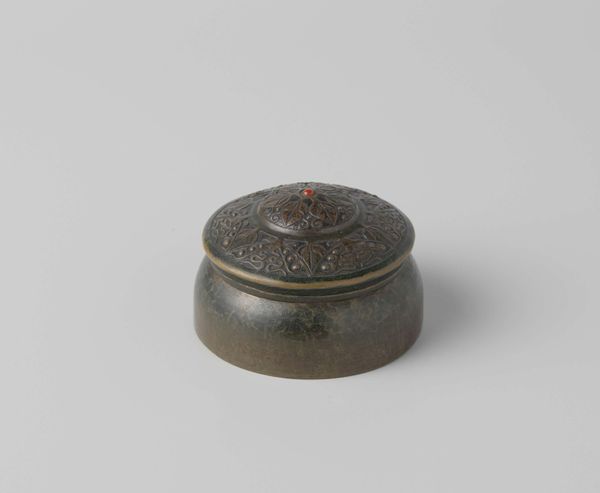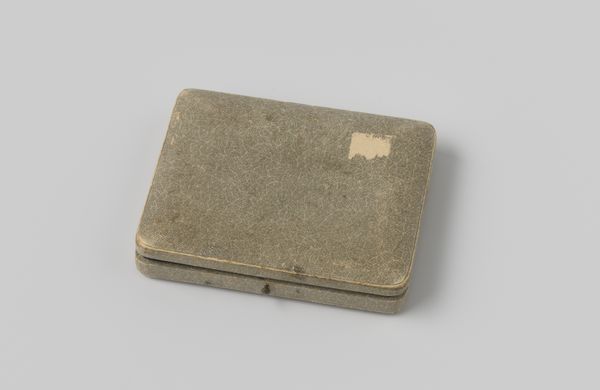
metal
#
baroque
#
metal
#
decorative-art
Dimensions: height 4.0 cm, width 8.4 cm, depth 7.5 cm
Copyright: Rijks Museum: Open Domain
Curator: Here we have a piece attributed to Henri La Pierre, entitled "Foedraal voor snuifdoos," or "Case for a Snuffbox." It's dated to circa 1680-1752, a period when such objects were common accoutrements among the wealthy. Editor: My first impression is of a diminutive object, meticulously crafted. I am immediately drawn to its slightly battered state – the visible crack adding an unforeseen charm, a patina that suggests use, perhaps travel. What can you tell us about the construction? Curator: As a historian, it's compelling to think about the societal context of snuffboxes, status symbols. It would've been on display and it may even represent the colonial history, given tobacco trade. It represented more than just a box – it was wealth, and international connection. Editor: And what is this case *made* of? It appears to be some kind of woven material affixed to a rigid frame. Almost textiles over what looks like metal. The artistry here is clearly not just in design, but also fabrication and the artisan's labour to produce. Was this typical of the time, to have this combination of elements? Curator: Yes, we know during the baroque period, emphasis was put on luxury objects and this also reflected in the development of unique forms and new approaches that combined both simple and noble materials for lavish display. This would've been the height of fashion and refinement. Editor: And one can picture the maker carefully applying this outer layer. Perhaps working in concert with metal-workers in the frame itself. We really must appreciate that there would be skilled specialized tradespeople involved here! I find myself also considering what’s *inside* the case, almost wishing we could know more about the type of snuff this might have held! Curator: Indeed, and in displaying objects like these, it encourages audiences to connect with not only artistic skill, but with this object’s role in an extensive global history that reflects colonial history and international trade. Editor: It really does. It transcends its function. A simple utilitarian object elevates to craft. Thanks to its age, labor, and design qualities. I find this piece so thought-provoking. Curator: Agreed, understanding it requires a historical perspective of craft and art.
Comments
No comments
Be the first to comment and join the conversation on the ultimate creative platform.


